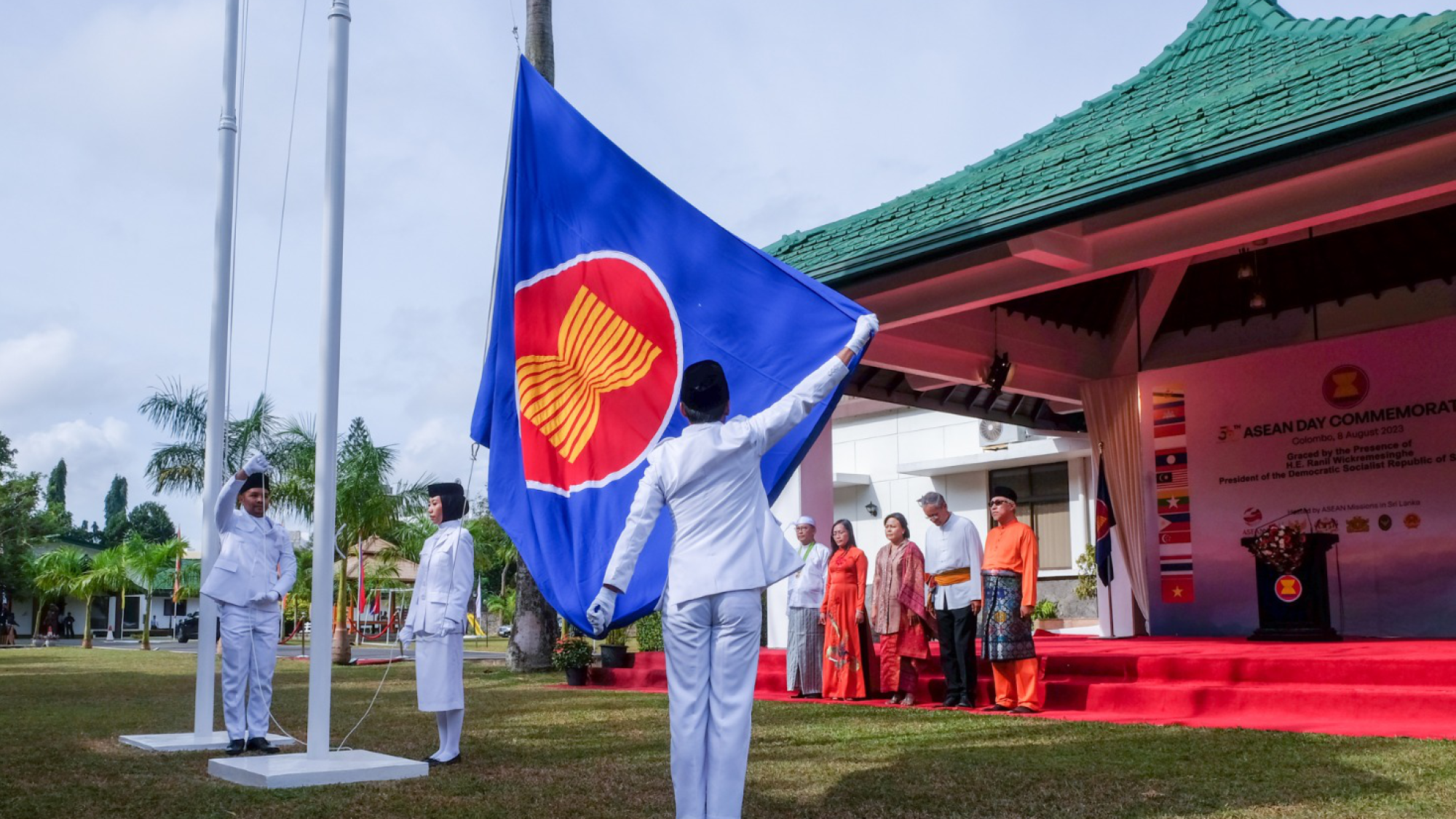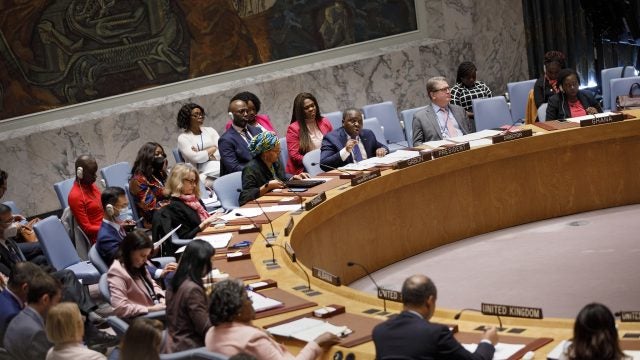
Title: Southeast Asia’s Grand Strategy: Hedging
Southeast Asian nations such as Malaysia, the Philippines, and Vietnam, but also ASEAN, are hedging toward both China and the United States. However, China’s assertiveness in the South China Sea may cause some countries, notably the Philippines, to reconsider their hedging strategy. Undermining the hedging behavior of Southeast Asian countries, however, will not improve the security and influence of China – or the United States – but would rather make the region less safe and stable.
The geopolitical and geoeconomic rivalry between the United States and China is being felt particularly strongly in Southeast Asia. The struggle of the two superpowers for dominance and influence threatens to undermine the relative stability of the region in the post-Cold War period. In turn, this trend puts the regional centrality of the Association of Southeast Asian Nations (ASEAN) at risk: if one of the superpowers achieves the status of a hegemon, there will be no need for ASEAN as a bridge builder.
In principle, however, a situation in which two major powers compete for influence is advantageous for ASEAN, as it enables the organization to pursue a double hedging strategy vis-à-vis the United States and China. Conversely, both major powers benefit from this strategy, as ASEAN and its member states seek comprehensive relations with both Washington and Beijing.
There exists no undisputed definition of hedging, but essentially all hedging strategies are designed to provide insurance against insecurity and risks caused by strategies and behavior of great powers. They represent a mixture of engagement, cooperation, and confrontation against the hedging target. Whether cooperative measures outweigh confrontational ones depends largely on how the political leaders of the hedger assess the aims and strategies of the hedging target as well as the power capabilities of their nation.
So far, ASEAN has attempted to play a mediating role between Washington and Beijing, involving them actively in the multilateral, ASEAN-led cooperation mechanisms in the Indo-Pacific. Multilateralism and internationalization of contested issues are crucial means to strengthen the strategic leeway of ASEAN. The Southeast Asian governments apply different forms of hedging vis-à-vis China and the United States. Toward China, Malaysia follows a strategy of cautious and soft hedging, while the hedging strategies of Vietnam and the Philippines are more robust, i.e. their responses to China are usually more confrontative, including strengthening defense and security partnerships with the United States, Japan, Australia, and other powers. Their hedging strategy toward the United States can be labeled soft, as Washington does not pose a direct security risk. However, they also aim to avoid becoming dependent on the United States.
The main aim of these hedgers is to avoid being forced to make a strategic choice between the United States and China (or any other major powers). Instead, hedgers maintain their strategic ambiguity by keeping omnidirectional relations with all great and smaller powers. In doing so, they reduce the risk of becoming dependent on a single power and can thus maintain their autonomous foreign policy decision-making.
However, a hedging strategy is doomed to fail if one player – in ASEAN’s case, the United States or China – becomes too powerful, altering the balance of power in the region in its favor. In this situation, smaller nations must fall back on the traditional strategies of balancing or bandwagoning. The two essential components of a balancing strategy are strengthening a state’s military and soft power capabilities and joining a counter-alliance of nations to contain the power of a stronger actor. Alternatively, in a bandwagoning strategy, a weaker state aligns with a stronger, adversarial power to reduce the risks posed by that actor, while accepting that the stronger partner benefits more from the cooperation. In both cases, there is less strategic leeway than with a hedging strategy.
Hedging – Opportunism Guided by Principles
According to Timothy Garton Ash, Ivan Krastev, and Mark Leonhard, we are living in an á la carte world “in which you can mix and match your partners on different issues, rather than signing up to a set menu of allegiance to one side or the other.” Indeed, the Southeast Asian states are refusing to ally themselves completely with the United States or China at the expense of the other superpower. Moreover, they are also choosing their additional cooperation partners pragmatically based on what they can specifically offer. To avoid snubbing, they are also choosing their partners and the extent of cooperation in very a strategic manner, as too intensive cooperation with a particular nation could be perceived as an affront to either Washington or Beijing.
Hedging is partly opportunistic, but it is also a planned strategy, allowing a pragmatic and flexible implementation. This sets hedging apart from a purely opportunistic policy, based on ad hoc choices rather than guiding principles, making it arbitrary. Hedging can therefore be described as principled opportunism.
One apparent paradox is that even if a hedger deliberately signals strategic ambiguity, a hedging strategy is ‘readable’ for other actors because the other governments know that a hedger will not fully align itself with a major power. Thus, it is possible to calculate and predict the hedger’s behavior to a considerable extent. However, even though great powers should know in principle how far they can pressure a hedger before they change their behavior to bandwagoning with them or balancing against themselves, they may sometimes overstep the line.
Southeast Asia’s Hedging Is in the Interest of the Two Superpowers
In the context of the current geostrategic rivalry in Southeast Asia, it is in the strategic interest of both China and the United States that ASEAN, Malaysia, the Philippines, and Vietnam further pursue their hedging strategies. Maintaining close but not exclusive relations with these nations is more beneficial for Beijing and Washington than forcing them into an alliance rejected by them in principle, which would be difficult to maintain due to the lack of loyalty. It would be even worse for both if a nation became a full member of the opposing camp.
As a consequence, China’s assertiveness towards Vietnam and the Philippines in the South China Sea may force both to further deepen their relations with the United States, perhaps even leading them to consider ending their hedging strategies. They have also deepened their defense and security cooperation with key partners such as Japan, Australia, India, and the EU. Moreover, Southeast Asian nations benefit from increased infrastructure cooperation with these countries via avenues like the EU’s Global Gateway Initiative, a geopolitical and geoeconomic counter-initiative to the BRI.
No matter which form of hedging the Southeast Asian nations applied and apply, they have not yet convinced China to make compromises regarding the territorial disputes in the South China Sea. While Beijing and Hanoi managed to elevate their relations and signed various security and economic agreements during Xi’s visit to Hanoi in December 2023, the honeymoon did not last long. In June 2024, China once again stepped up its provocations against Vietnam in the South China Sea. The South China Sea dispute is the main controversy in Southeast Asia, potentially involving the United States and China in a major diplomatic and even military conflict. Yet, the fact that Washington and Beijing have avoided a direct conflict so far could be due as much to the hedging strategies of ASEAN, Malaysia, the Philippines, and Vietnam as to the policies of the two superpowers.
The Philippines – Still Hedging After All
The actions of the Philippines also illustrate how strongly the strategies and actions of a great power influence whether a government can maintain its hedging strategy or switch to bandwagoning or balancing. While former President Rodrigo Duterte (2016-2022) did not forfeit Manila’s hedging strategy, he sought closer political and economic relations with Beijing to resolve the territorial dispute in the South China Sea in the first half of his term. However, China did not make any meaningful concessions to Duterte. Thus, he returned to Manila’s more traditional hedging approach, which included revitalizing close security relations with Washington.
Under President Ferdinand Marcos Jr., the Philippines has applied an even more robust hedging strategy. Marcos Jr. seemingly aims to strengthen the Philippines’ negotiating position vis-à-vis China, for which the clearly committed security support of the United States is indispensable. Even so, Marcos Jr. remains open to discussing the South China Sea dispute bilaterally with China. For example, during his talks with Xi Jinping in Beijing in January 2023 and in San Francisco in November 2023, he suggested setting up a hotline and improving the bilateral consultation mechanisms between the Philippines and China’s foreign ministries and coast guards. In July 2024, China and the Philippines agreed to “jointly manage maritime disputes and reduce tensions” in the South China Sea. However, both maintain their territorial claims.
Under President Marcos Jr., the Philippine government has demonstrated that it chooses its partners in a very strategic manner. Keen to modernize the Philippines’ infrastructure, Marcos Jr. accepted funding and investments from the EU, Japan, and other countries. Their commitment enabled him to cancel signature Belt and Road Initiative (BRI) projects Duterte had previously agreed to. However, Marcos Jr. also emphasized that he remains in principle committed to collaboration with China under the BRI frame. During his visit to Beijing in January 2023, Marcos Jr. secured investment pledges from Xi worth up to USD 22.8 billion. This example illustrates that a hedger needs significant offers from other actors to secure counteroffers that place it in a stronger position against the hedging target. As Manila’s importance has continued to grow due to China’s increasing assertiveness in the South China Sea and towards Taiwan, Washington’s security and economic relations with Manila will likely deepen further under both a Harris and a Trump administration.
Conclusion
By offering more options for defense and security cooperation, the Biden administration is supporting Manila and Hanoi’s hedging strategy towards China. Washington and Hanoi have elevated their relations to a comprehensive strategic partnership, signed during President Joe Biden’s visit to Hanoi in September 2023. Looking ahead, however, the Southeast Asian hedgers must also hedge against the prospect of a second Trump administration. Donald Trump would likely readopt the transactional approach of his first term. U.S. support may be offered only in exchange for direct tangible benefits instead of more difficult-to-measure strategic advantages for the United States. A potential Trump administration may either demand that Southeast Asian nations invest more in their own military capabilities or weaken their economic or political ties with China.
While Kamala Harris would most likely continue Biden’s multilateral foreign policy, the United States would be a difficult partner to assess under a second Trump administration. Without the United States as a trustworthy and reliable partner, however, Southeast Asian hedging strategies towards China will lose credibility. For a hedging against a superpower to succeed, a hedger needs to have good relations with the other superpower but no alliance. Therefore, only a double hedging strategy towards both can succeed.
Even though applying a hedging strategy cannot resolve all risks the smaller Southeast Asian nations face, hedging still yields more benefits for them than balancing or bandwagoning. To make hedging sustainable, however, China and the United States must recognize that it is in their own strategic, security, and economic interests for ASEAN and the majority of the Southeast Asian nations to maintain their hedging strategies.
Beijing and Washington should therefore avoid pressuring the Southeast Asian countries to align with them. Close relations are possible and mutually beneficial, but exclusive security or economic partnerships with these nations can be counterproductive for all involved parties. They could be seen as a means of containment of the other superpower – and as a departure from Southeast Asia’s hedging strategies. By undermining the Southeast Asian countries’ hedging behavior, the United States and China would not only harm their own strategic interests but also make Southeast Asia a less secure region.
. . .
Alfred Gerstl is an International Relations scholar and Associate Professor at the Department of Asian Studies at Palacky University Olomouc (Czech Republic), where he is head of the EU-funded project The EU in the Volatile Indo-Pacific Region (EUVIP), and Adjunct Professor at the University of Vienna (Austria). He is also the President of the Central European Institute of Asian Studies (CEIAS) in Bratislava (Slovakia). This work has received funding from the European Union’s Horizon Europe coordination and support action 101079069 — EUVIP — HORIZON-WIDERA-2021-ACCESS-03.
Image credit: Indonesian Embassy in Colombo, Wikimedia Commons, via public domain.
Recommended Articles

This article explores the uncertain future of Arctic governance amid shifting global geopolitics. It argues that whether Washington and Moscow opt for confrontation or cooperation, multilateralism in the Arctic…

Twenty-five years ago, the United Nations Security Council adopted Resolution 1325, establishing a framework that underpins the Women, Peace, and Security (WPS) Agenda. The Resolution recognized both the…

When we analyze conflicts in the Middle East, we are not analyzing conflicts with isolated impacts but risks for global energy security. Recent conflicts in the Middle East have highlighted…